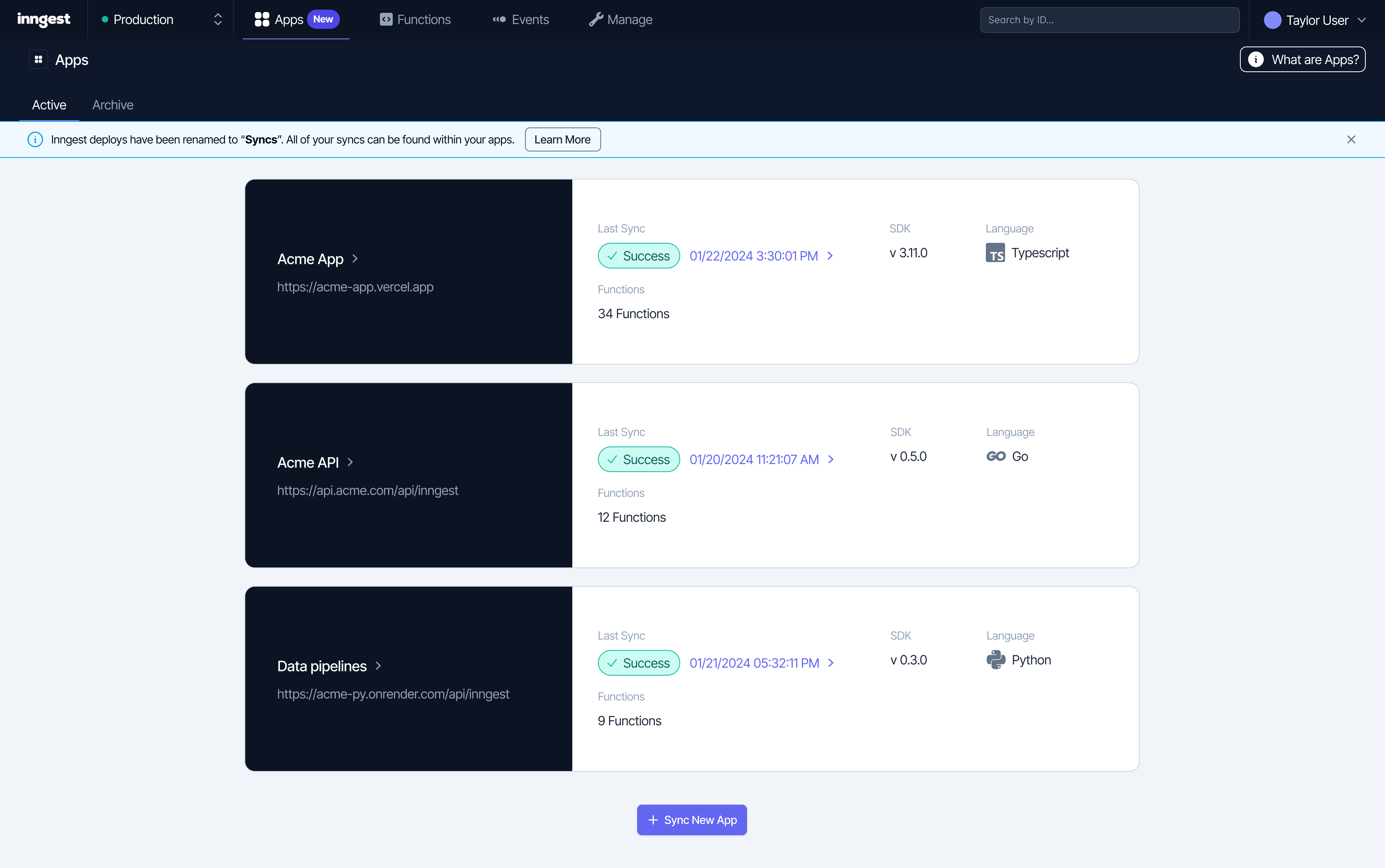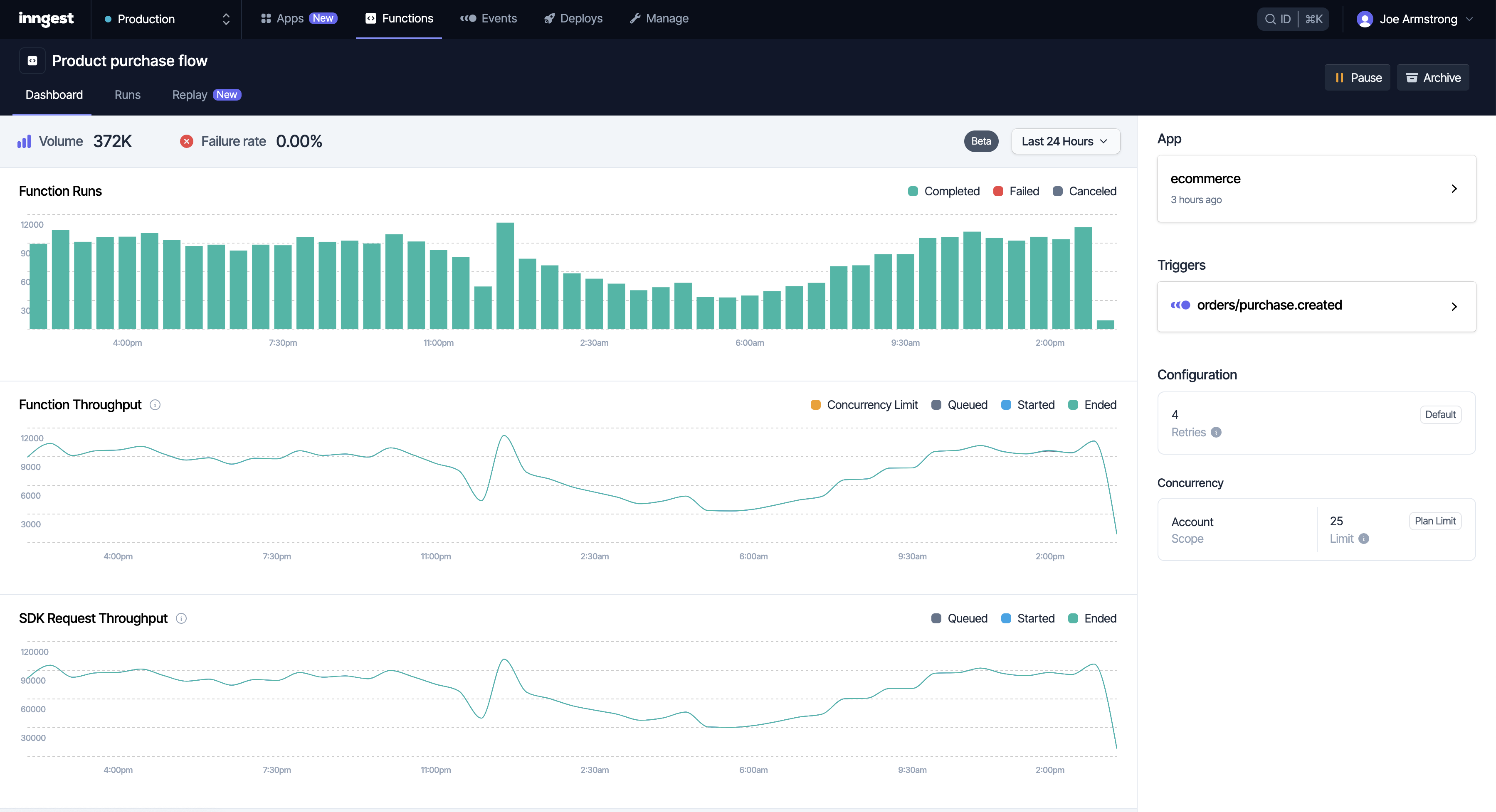Inngest, a startup that makes it easier for developers to build and manage serverless backends, today announced that it has raised a $6.1 million funding round led by Andreessen Horowitz, with follow-on investments from GGV, Afore Capital and Vercel CEO and co-founder Guillermo Rauch, who all participated in the company’s $3 million seed round.
At its core, Inngest allows developers to focus on building their serverless, event-driven backend workflows without having to worry about the infrastructure and the workflow execution and queuing mechanisms to make that work at scale. Indeed, it was working with increasingly larger customers — SoundCloud, for example, recently moved its video generation and transcoding workflows to Inngest — that led the team to build many of its most recent additions to the service.
As Inngest founders Tony Holdstock-Brown (CEO) and Dan Farrelly (CTO) told me, the team added new flow control features, for example, which now make it easier to manage concurrency down to the user level. This helps developers build and manage multi-tenant applications and makes it easier to handle high-volume workloads but also provides more controls for companies that want to deploy AI workloads in production, given that these resources are scarce and prone to latency.
Inngest’s focus early on was on building what the team likes to call “durable workflows,” that is, workflows that can sleep for a long time if nothing is happening and then pick up the slack again quickly as needed. Inngest will handle the queues and database state for these functions and the developers don’t have to do anything special to make that work. Combining that with the new flow control features, Inngest argues, is unlocking a lot of new capabilities for users.
“We realized that as people were bringing durable workflows [to Inngest], there was a gap there in terms of how you actually build production applications,” Farrelly told me. “The durability and the reliability, which we have, combined with the flow control aspect allows you to build into this reliability layer. It’s like, alright, well, how am I managing my resources? Who’s getting to run the jobs? One thing that we learned in the last six months was that as more enterprises came to us, they needed both [durable workflows and flow control] — and they work perfectly together.”
A lot of companies are now building their applications on top of AI — be those homegrown models or from vendors like OpenAI — and their users are competing for limited resources. “The way that we’ve built our multi-level virtual queues allows you to manage the throughput across a whole set of users with much greater control. In the last few months, we also added prioritization to it as well, which also helps when everyone’s going through the same place, competing for the same OpenAI or your model resources,” Farrelly said.
The Inngest team also expanded its language support from only offering a TypeScript SDK to also offering Python and Go SDKs — and users can migrate between them as needed without having to shut down their functions. “We did start out serverless and TypeScript, but that’s not everything,” Holdstock-Brown said. “We ended up doing a Python SDK and Go SDK, and interestingly, if you rewrite your functions from TypeScript to Go, for example — if you’ve got this long-running function that might take a year to finish, the state carries over, you can do live language migrations, you can do cloud migrations.”
Two other new features the team recently launched are Replay, which allows teams to recover from incidents by re-running any failed jobs in bulk, and new observability tools.
Holdstock-Brown noted that the team plans to use the new funding to grow the team and ensure that Inngest, which, after all, provides a core service for its customers, is as reliable as possible, even as it scales to support more users.
“We’re particularly choosy about who we hire, but we’re growing and we need to hire more people in order to make things work,” he said. “Luckily, we did a lot of upfront work to plan and build and architect our systems accordingly before starting the company, so I think it’s just honestly building up more in-demand things and it is shoring up the system.”
He also noted that as enterprises moved to Inngest, they realized that they are already sending a lot of their data through its system, so now they are asking the company to help them export this data to their data warehouses, for example, and to perform ETL on it. If there’s one unifying trend in the enterprise space right now, it’s businesses looking to consolidate where they are spending their money. So if a single tool can do multiple jobs, that’s a huge selling point.


